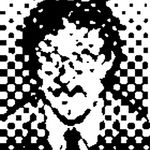- Home
- Illustrator
- Discussions
- Re: How to make this type of border in AI a class...
- Re: How to make this type of border in AI a class...
How to make this type of border in AI a classic style frame inverted rounded corners
Copy link to clipboard
Copied
Thanks for looking in,
As my boy the late great Einstien always said; "If I had an hour to solve a problem I'd take 55 minutes to ask the correct question and solve it with the remaining 5minutes. "
I am working in Cs6 AI and want to create this border, (in the red square) I do not know the name of it but here is a pic of it. How can I create this frame in Cs6, which would be in my opinion an inverted rounded corner.
Explore related tutorials & articles
Copy link to clipboard
Copied
This can be done simple by on the recent AI version using Live corners then change then type of the corner , or you also achieve thensame result using the convert anchor point tool to adjust the curves of the coners .
in cs5 , you can use the pen tool to draw one corner then copy, rotate to the other corners,
another workaround, draw a rectangle and 4 circles on each corner, then use the shape builder tool to delete the unwarranted elements.
Copy link to clipboard
Copied
To add another one:
draw a rectangle and 4 circles on each corner, select all and click Minus Front in the Pathfinder panel.
Copy link to clipboard
Copied
Thank you for the simple solution, will give it a try. Hope this works in CS6 pre subscription.
Copy link to clipboard
Copied
Thank you using Cs6 V. before subscription Cloud. I was trying to figure the name to find a video on it. I'll go check ShapeBuilder Tool Maybe someone has made a vid for this, I had no idea what phrase to use as a Syntax
Copy link to clipboard
Copied
Netcommercial,
Based on a more literal interpretation of your question, you can:
1) Create the inner or outer rectangle and create the other one with Offset Path (positive or negative), at thise stage using the small Stroke Weight and Miter Join ((corresponding to Butt Cap);
2) Create the first larger or smaller circle placed suitably on a line going out from one of the corners at 45 degrees andcreate the other one with Offset Path (positive or negative), then copy the circle and line set to the corresponding positions/orientations at the other three corners, then hide/delete the lines;
3) Use Minus front on the outer rectangle/smaller circle set and on the inner rectangle/larger circle set;
4) Increase the Stroke Weight of the outer path;
Now you have the final paths;
If you wish to go further and have a decoration at each corner like the one in the 1999 award:
5) Select both paths from 3) and make a one step Blend to have an intermediate path;
This can be used as the basis for the spine of the decoration as in the 1999 award, but it will be closer to the edge outer path because of the different Stroke weight, so you can:
6) Offset the path from 5) by a quarter of the difference in Stroke Weight between the paths from 3)/4);
This will place it midway between the edges;
Proceeding from 5) or 6) (after hiding/deleting the path from 5)):
7) Delete the straight segments of the intermediate path to only have the curved corner parts for the decorations.
This reminds me of an old joiner saying: Measure twice and cut once.
Copy link to clipboard
Copied
Thank you for the detailed steps. As an old cabinet maker, I do know the saying. In computers we can CNTRL Z but not so lucky at the table saw.
Find more inspiration, events, and resources on the new Adobe Community
Explore Now

